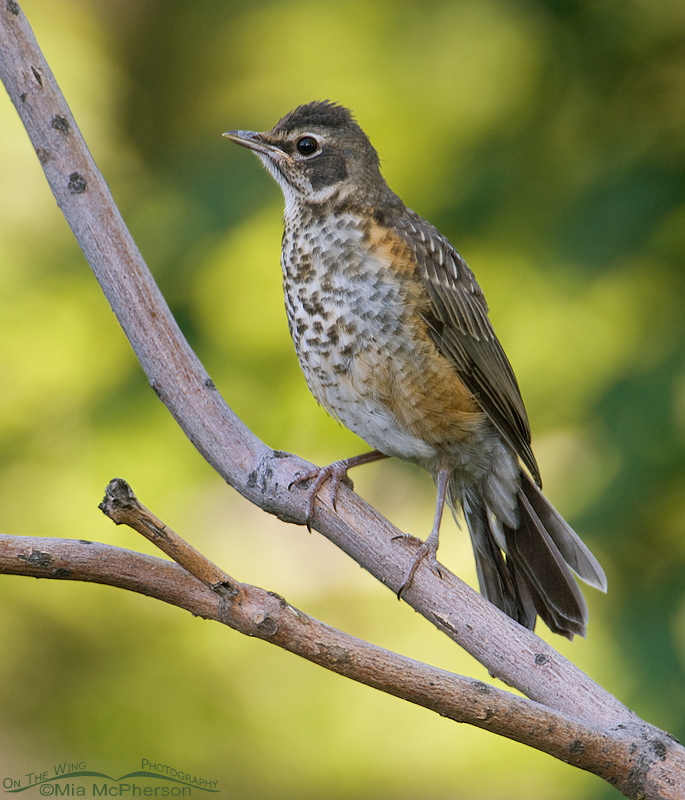 American Robin juvenile – Nikon D200, f7.1, 1/60, ISO 320, Nikkor 200-400mm VR with 1.4x TC at 400mm, natural light
American Robin juvenile – Nikon D200, f7.1, 1/60, ISO 320, Nikkor 200-400mm VR with 1.4x TC at 400mm, natural light
After over 3 1/2 days of my web site and my blog being down it is finally back up and I hope it stays that way.
I worked up this American Robin juvenile image while my site and blog were down and realized that I don’t photograph robins often enough. We see them here in Utah in the winter but not in the numbers that we do spring through fall.
I remember that when I lived in the Midwest that the sight of robins was a sign that winter was losing its grip and that soon the warmer days of spring would be arriving. I liked to think of them then as harbingers of spring.
Robins are the largest and most abundant North American thrushes. Unlike other thrushes the American Robin has adapted well to human presence and the habitats we have altered to suit our needs.
The image above was taken in my backyard. The adult robin was busy finding insects and worms for about three juveniles in the garden and this juvenile perched higher to see when the parent would find some food. I really like the speckled breast of the juveniles.
I really should pay more attention to them.
Life is good.
Mia
Click here to see more of my American Robin photos plus facts and information about this species.


I wondered why your site wouldn’t open! This is a wonderful pose, with the details of the bird’s body open to the camera. I really like the speckled breast and crest of this young robin. Here in Indiana they are now out in numbers and foraging in groups. Spring is not really defined by our calendar, or what the groundhog sees or doesn’t see-it really begins slowly with the response of plants and animals to subtle changes in daylight and temperature. Although the landscape is all brown tones still, the daffodils are coming up in my yard, and the bird activity has increased in the woods. So, for me, spring is on its way!